By Bob Bergin
It was at the grand banquet given in his honor that General William “Wild Bill” Donovan told his host, General Dai Li, that the OSS intended to work on its own in China and that he wanted no interference from the Chinese. Dai Li exploded. He would execute any OSS agents found operating independently on Chinese soil.
Donovan struck the table, shouted: “For every one of our agents you kill, we will kill one of your generals!”
“You can’t talk to me like that.” Dai Li shouted back.
“I am talking to you like that,” Donovan said. The two men “were suddenly all smiles.” The confrontation was over, but in the morning Donovan was scheduled to meet Dai Li’s boss, the Generalissimo himself, Chiang Kai-shek. It was not a pleasant prospect.
Dai Li was Chiang Kai-shek’s spymaster, Chiang’s “claws and teeth.” As chief of the benignly named Bureau of Investigation and Statistics of the Military Affairs Commission, Dai Li controlled thousands of spies in China and in every country that had a Chinese community. Some sources claim that Dai Li had 100,000 agents in the field by 1945. There were at least 50,000 regular agents and up to 500,000 total spies and informers, making Dai Li’s the world’s largest espionage operation at the time.
Although the Japanese were occupying large areas of China, Dai Li’s vast resources were focused not on them, but on Chiang’s political enemies and the Chinese Communists. Against those targets, Dai Li carried on espionage and intelligence work. His biographer, noted historian Frederick Wakeman, Jr., called Dai Li “an extraordinary secret policeman.” After his meeting with Dai Li in December 1943, OSS Chief Donovan called him a “mediocre policeman with medieval ideas of intelligence.” Both evaluations were correct.
William J. Donovan was the chief of the Office of Strategic Services, the OSS. During World War I he led a battalion of the famed Fighting 69th New York Volunteers. He was wounded three times; for his coolness under fire he was named “Wild Bill” by his men. His valor won him the Medal of Honor. After the war, as a Wall Street lawyer involved in politics and extensive foreign travel, Donovan came to the attention of President Franklin D. Roosevelt. They were from opposing political parties but shared a world view.
Roosevelt valued Donovan’s insights and used him as an informal emissary to evaluate events in Europe. In 1941, Roosevelt named Donovan the Coordinator of Information (COI), and the following year made him the chief of the new OSS, America’s first strategic intelligence organization.
Donovan arrived in Chongqing, China, on December 6, 1943. In October he had been ordered to collect intelligence in China’s Communist-controlled areas. He had briefed President Roosevelt on the intelligence situation in China, where the OSS had found itself in an awkward relationship with Dai Li’s organization. Donovan told Roosevelt, “We cannot do our job as an American intelligence service unless we operate as an entirely independent one, independent of the Chinese and our other allies.”
Roosevelt agreed and authorized Donovan to tell the Generalissimo “that we must be permitted independence of operations.”
Donovan met with Chiang Kai-shek the morning after Dai Li’s banquet and found Chiang ready for him. He told Donovan that he expected the Americans to recognize that China was a sovereign nation and that—like America—China would object to a secret service from another country coming into China and working there without the knowledge of the Chinese. He asked Donovan to conduct himself “accordingly.”
Donovan had little choice. For the OSS to conduct its operations, Donovan would have to work around Chiang and Dai Li. Dai Li’s response to what Donovan did next was telling. Dai Li did nothing when Donovan circumvented him by creating a separate clandestine OSS intelligence collection mechanism and hid it inside the U.S. Fourteenth Air Force.
Donovan found an ally in Fourteenth Air Force commander General Claire Lee Chennault, Chiang Kai-shek’s aviation adviser since 1937. The effectiveness of the Fourteenth Air Force that Chennault now commanded depended on the accuracy of the intelligence it received to target its bombers. The information Chennault was receiving from the Chinese War Ministry was not sufficient.
The U.S. commander in China, Lt. Gen. Joseph Stilwell, “exhibited a striking lack of interest in the intelligence problems of the China sector of his command,” Chennault wrote in his memoir, Way of a Fighter. The intelligence the Chinese provided was outdated, inaccurate, and useless for targeting the bombers. Chennault turned down “a proffered alliance with Dai Li’s notorious KMT secret police.” It might have been useful, he thought, “but since Dai’s men were engaged in a ruthless man-hunt for Communists, it would have meant the end of our intelligence and rescue relations with Communist armies in the field.”
“Stilwell specifically prohibited the Fourteenth from any attempts to gather intelligence,” Chennnault wrote. “I was again faced with the choice of obeying Stilwell’s orders literally, or finding some other method of getting the information so essential to our operations.”
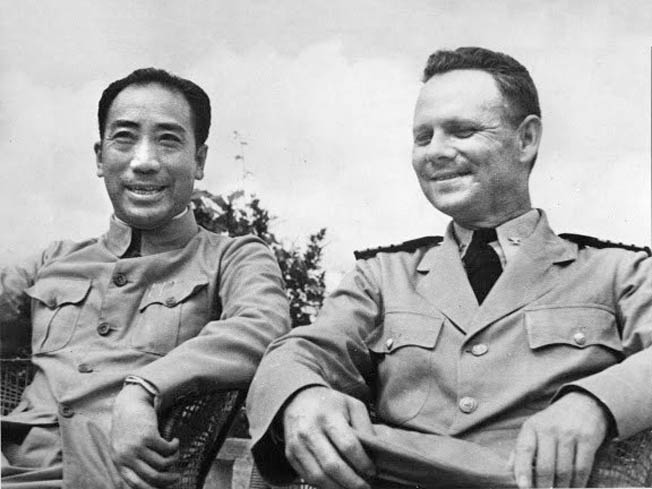
Chennault solved his problem “by organizing the Fourteenth’s radio-intelligence teams within the framework of our air-raid-warning control network and continued to depend officially on Stilwell’s stale, third-hand Chinese intelligence.”
Chennault’s intelligence teams required men who could pass through the lines and operate in Japanese-occupied territory for extended periods of time. “Most of our field intelligence officers were old China hands,” Chennault wrote, “men who had lived in China before the war, spoke the language, knew the customs, and could live in the field on Chinese food.”
The pioneer and example for all who followed was John Birch, “led into our fold by Jimmy Dolittle after Birch had guided Jimmy and his Tokyo raiders out of East China,” according to Chennault. The young Georgia Baptist was serving as a missionary in China and wanted to serve both God and his country. He stayed in the field for three years and refused any leave while the war went on.
Chennault agreed to let the OSS use the Fourteenth Air Force as cover for its unilateral operations behind Japanese lines. The result was the 5329th Air and Ground Forces Resources and Technical Staff, AGFRTS, or “Ag-farts,” as it was popularly called. The organization combined OSS and the Fourteenth’s field intelligence staff, added OSS Research and Analysis Branch personnel, and assumed all intelligence duties of the Fourteenth Air Force. It was a happy marriage and a very effective one.
OSS agents behind the lines gathered intelligence on Japanese shipping, rail traffic, and other targets, interrogated prisoners, trained guerrillas, sometimes engaged in guerrilla warfare, and did a host of other things important to the war effort. Chennault was pleased with the results. Given his myriad responsibilities, management of the entire AGFRTS organization was eventually turned over to the OSS.
The creation of AGFRTS was done secretly but with the recognition that OSS operations run through AGFRTS could not be hidden long from Dai Li—and eventually Dai Li was officially informed. The fact that Dai Li never challenged the OSS again and kept his hands off OSS operations can be read as Dai Li’s understanding that Donovan and the Americans had drawn a line that they would not allow him to cross.
Many problems in the overall Chinese-American relationship during World War II grew out of the divergence in Chinese and American goals in the war and the strategic vision the two countries had for the future. For the Nationalist Chinese, the ongoing war with the Japanese was not always the top priority. In the Chinese view, once America got in the war the Japanese could not win. What would come after the war was far more important for the Nationalists. The Communists would have to be dealt with, as would China’s imperialist ambitions. China had to free itself of outside interference and extend its own influence in Asia. The influence of the French, British, and Americans would have to be curtailed.
After the Japanese attack on Pearl Harbor, Americans started streaming into China, some with big ideas for winning the war and access to the funds to do it. Among them was Commander Milton E. Miles, known to history as Mary Miles, the nearest thing the U.S. Navy had to a China expert. A graduate of the U.S. Naval Academy, he had spent five years with the Asiatic Fleet. In early 1942, U.S. Navy Chief Admiral Ernest King sent him to China to establish weather stations and “to heckle the Japanese.”
One of the Chinese Miles was told to contact was Dai Li. Before leaving Washington, Miles read Dai Li’s file and was shocked. Dai Li was called an assassin and the head of a Gestapo-like organization. It was said that he ran his own concentration camps for political enemies, that he did not like foreigners, and few had ever met him. He was said to be guilty of crimes that ranged from torture to mayhem and beyond. Reportedly, he had executed his own mother.
What can be confirmed of Dai Li’s history shows a classic rise from obscurity to great power through cunning, intelligence, and deviousness. He was born in 1897 in the hills of Zheziang Province, where even as a teenager he was seen as natural leader but also as “a trouble maker addicted to sex and gambling.” Caught cheating at cards, he ran off to join the army and then deserted—but not before he connected with the Green Gang, the notorious gangsters who controlled the Shanghai underworld. It was a link that would serve him well in times to come.
In 1921, Dai Li met Chiang Kai-shek and ran errands for him. In 1926, possibly with Green Gang help, he managed to get admitted to the Whampoa Military Academy, where Chiang was the chancellor. To ingratiate himself with Chiang, who wanted to use him as a batman, he reported on the ideological purity of his fellow cadets. Those he identified as Communists were eliminated in a purge at Whampoa in 1927.
Whampoa and its alumni were the base on which Chiang’s power was built. His loyalists moved in a swirl of associations, secret societies, and front organizations. Permeating the mix was Chiang’s personal espionage apparatus of secret intelligence organizations that he let fight among themselves for funds and authority.
In 1928, Chiang established a 10-man intelligence unit called the Liaison Group and put Dai Li at its head. Later called the “embryo of all subsequent party and state military organizations,” the Liaison Group had to compete with many others. To strengthen his hand, Dai Li formed the League of Ten, Whampoa graduates he put on his private payroll who became the core of his personal secret service.
In 1932, when Chiang needed intelligence that others were unable to provide, he directed Dai Li to turn his League of Ten into the formal Special Services Department. The “Ten” became more than a hundred, and Dai Li’s rise began. Dai Li became Chiang’s primary source for political intelligence, and in 1938, Chiang established a new independent security agency, the Bureau of Investigations and Statistics. Dai Li was made its chief.
Before the outbreak of war with Japan, Dai Li’s activities centered on Shanghai, where he suborned the police and drew on the skills of his old associates in the Green Gang. Kidnapping and torture became tools to gather intelligence and root out Chiang’s enemies and the Communists. Trafficking in narcotics and other contraband was the means to supplement budgets as Dai Li’s activities and power grew. Dai Li was the only armed man allowed in Chiang’s presence. He became the most feared man in China.
Within days of his arrival in China, Miles met the man few foreigners ever met. At their first meeting Dai Li arranged an imposing mansion for Miles in Chongqing, formerly the residence of Chongqing’s mayor. The current occupant, the city’s garrison commander, would be pleased to leave, Dai Li said. With the house came a staff, including two Chinese liaison officers who would be Miles’ interpreters and go everywhere with him. At their next meeting Dai Li organized a trip for Miles into occupied China, a tour he personally conducted all the way from Chongqing to the distant Chinese coast.
Dai Li outdid himself. The Japanese controlled the main roads but could do little about the smugglers, resisters, and refugees who fed information to Dai Li and assured the safety of the tour route. It left Miles greatly impressed with how easily Dai Li’s organization could operate behind Japanese lines. The group endured several air raids, and while sitting one out in a rice paddy Dai Li proposed to Miles the creation of a 50,000-man Chinese guerrilla army under Sino-American control.
Without consulting Washington, Miles agreed and the two started working on the creation of what became the Sino-American Cooperative Organization, or SACO, to carry out espionage, special operations, and signals intelligence. The Chinese would provide the manpower, the United States the rest. Dai Li would be the SACO director, Miles his deputy.
Stilwell later commented, “The Chinese had a great nose for money and to them Miles probably looked like he had lots of it.”
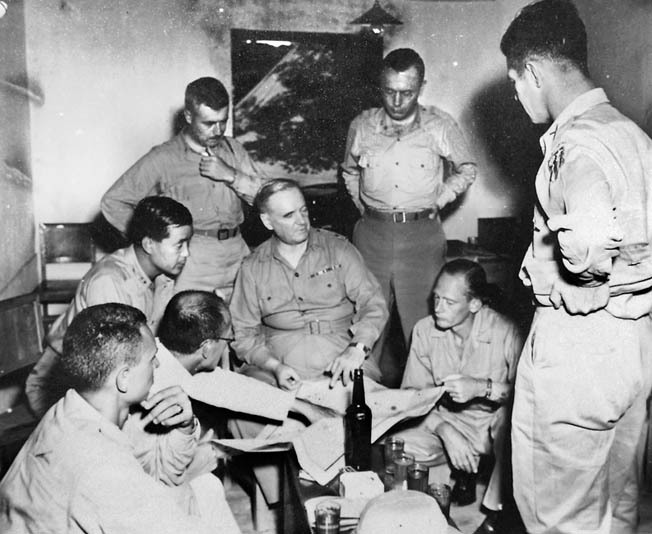
created a separate OSS intelligence collection apparatus in Chinato conduct his own OSS operations.
Targeting Miles was likely much more deliberately done. Even before he arrived in China, he was already well known to Dai Li. In Washington, Major Xiao Bo, China’s military attaché, was a friend of Miles. They met often to discuss ways the United States could help China resist the Japanese. Miles was oblivious to the fact that Xiao was an agent for Dai Li.
Later, Miles would be surprised by how much Dai Li knew about him. Miles remembered, “He asked, by name, about each of my sons. And my car? He knew that a Chinese name was painted on it—‘lan-ti,’ meaning ‘the blue one.’”
Alghan Lusey, a communication engineer working for Donovan, was invited to join the early part of the trip and had heard Dal Li’s proposal. He was skeptical. When Lusey returned to the United States soon afterward, Miles asked that he take a copy of the proposal to Admiral King. Lusey passed a copy to Donovan.
Donovan resisted the SACO idea. But the OSS needed a Chinese base for its Asia operations, and Donovan agreed to wary cooperation with Miles and Dai Li. Washington’s approval of SACO required that Miles be appointed chief of OSS activities in China. The OSS was admitted to China as the junior partner in Dai Li’s intelligence network. The agreement specifically precluded the OSS from working independently.
The formal SACO agreement was signed in Washington on April 15, 1943. Secretary of the Navy Frank Knox signed on behalf of the U.S. Personnel from the OSS, and the U.S. Navy started arriving at Dai Li’s base outside Chunking to instruct Dai Li’s people in everything from guerrilla warfare to criminal investigation, even an FBI school to train Dai Li’s secret police.
There were problems from the start. Miles said he would not tolerate interference from the OSS or “dictation” from Stilwell; he would personally select personnel and only accept OSS directives that he deemed wise. An observer described him as “100 percent Navy and 00 percent OSS.”
There was the focus of Dai Li’s organization, which was directed against Chiang’s internal enemies rather than the Japanese. There was the matter of torture. Happy Valley, which had a sanitized mess hall and Western toilets for the Americans, also had a prison where torture supposedly took place. There was the U.S. mistrust of Dai Li and concern about his methods, which reportedly included kidnapping, assassinations, and drug smuggling.
Dai Li’s hand was seen in thwarted OSS operations. Free Thai agents being infiltrated into Thailand from China by the OSS were delayed and several killed. In Dai Li’s view, Thailand was properly under the Chinese sphere of influence, and he had his own plans for the country. He would invade Thailand with a force of 10,000 Chinese guerrillas disguised as Thai and riding 10,000 Tibetan ponies. The situation was further complicated by Allied suspicions that Dai Li was trading secrets with Japanese intelligence.
These problems were exacerbated by Miles’ insistence that nothing should be kept secret from the Chinese; they would work directly with the Americans and everything would be shared. It was an exceptionally naïve position for an intelligence officer. Stilwell saw that immediately. Stilwell had long experience in China and had engaged in intelligence collection as a military attaché. Information acquired with Chinese help, he said, would be unreliable, even fabricated. Stilwell had discovered that his house servants were provided by Dai Li. Coming home unexpectedly one day, he found them going through his papers.
After his confrontation with Dai Li, Donovan fired Miles, who was officially removed from his OSS post on December 5, 1943, but remained as deputy director of SACO. He was replaced by Colonel John Coughlin, an experienced OSS officer who had served in Burma. OSS was done with Miles, but Miles was not quite finished with OSS.
It was time to direct attention to the Chinese Communists. Donovan had recognized the value of establishing contact with them early on. In 1941, his proposal to send an American undercover mission to work with the Chinese Communist guerrillas—the best guerrilla troops in the world by some estimates—was met with objections from the State and War Departments and set aside. By early 1944, serious American disillusionment with Chiang Kai-shek had set in, as had a growing concern that the war with the Japanese would be followed by a civil war that Chiang could not win.
There was a great need for information on the Communists. The one million guerrillas they controlled in Japanese areas became of considerable interest to Stilwell’s headquarters. In the spring of 1944, the Japanese Army launched Operation Ichi-go—the biggest Japanese land offensive of World War II. Contact with the Communists became imperative.
On July 22, 1944, eight American diplomats, soldiers and spies flew from Chungking to Yenan, the remote Communist headquarters in northern China. It was “the most exciting event ever since the war against Japan started,” wrote Chairman Mao Tse-tung in Liberation Daily. Chiang Kai-shek had blocked direct American contact with the Communists until he could no longer avoid it and maintain his credibility with his foreign allies. A few months later Chiang agreed to let a U.S. military observer mission be set up in Yenan. As Yenan was in “rebel territory” it became known as the Dixie mission.
Among the Americans on that first visit were several from the OSS. This was the opportunity the OSS was looking for. The Communists had agents everywhere in Japanese-occupied China with access to a tremendous amount of information, and they showed great willingness to share what they knew.
In September 1944, the OSS agreed to provide badly needed radios for 14 Communist-held areas, and 14,000 pounds of American equipment, including lightweight radios and spare parts, were flown to Yenan. The OSS was allowed access to Japanese Communists who had fled to Yenan and started operational planning to send Japanese agents to Manchuria, Korea, and Japan itself.
In November 1944, a plan was drawn up to send OSS special operations personnel to northern China to mount sabotage strikes against the Japanese and train 25,000 Communist guerillas at Yenan. The plan was not discussed with Chiang’s government when it was presented to the Communists in mid-December 1944, but Dai Li learned of it within days. The new American ambassador, Patrick Hurley, was invited to visit SACO headquarters at Happy Valley, where he was feted by Dai Li with “flags, ruffles, and flourishes.”
Over dinner, Miles revealed to him that “a massive conspiracy was afoot to send American troops and arms to the Communists,” and offered Hurley use of U.S. Navy radio facilities by which he could send messages to Washington and bypass his own embassy. Hurley, a self-made Oklahoma millionaire and former Secretary of War under Herbert Hoover, had arrived in September. He was uncritically supportive of Chiang and by all accounts unprepared to cope with the intricacies of Chinese political intrigue.
Hurley reported the plan to Roosevelt and went on to denounce the State Department officers in China whose assessments of the Chiang Kai-shek government and its prospects in the evolving China situation had become too realistic.
Stilwell had recently been recalled from China at Chiang’s demand. To his successor, recently arrived Maj. Gen. Albert C. Wedemeyer, fell the task of sorting out what had become a chaotic affair that had started while he was away visiting Burma. One outcome was that the SACO agreement was altered to bring Milton Miles and the SACO Americans directly under Wedemeyer’s command. SACO-trained Chinese guerrillas already in the field were replaced with OSS-trained commandos. The OSS was given approval to expand operations, but not before Hurley was congratulated by the Generalissimo for having “purged the United States headquarters of the conspirators.”
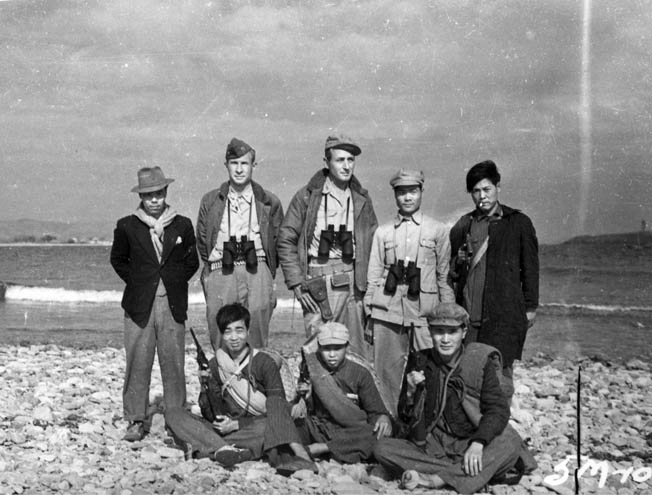
There was a purge, in fact, as senior State Department officers whose views of the China situation did not agree with the ambassador’s were “Hurleyed” out of China.
A group of OSS Jedburgh officers arrived early in 1945 to work with the Communists and conduct commando operations. The Jedburghs had been successful working with local resistance forces in German-occupied Europe, but they never reached northern China because of Chiang’s objections. This also hurt OSS intelligence collection capabilities aimed at the Communists as well as the Japanese, and prospects for continuing cooperation with the Communists were diminished.
The war was drawing toward its close, and on August 9, 1945, a total of 11 Soviet armies with more than one million men and 5,000 tanks pushed into the Japanese puppet state of Manchukuo in northeastern China. Into the chaos went OSS officers to report on conditions. Among them was John Birch, who was killed by a Chinese Communist soldier at a roadblock.
As the war was ending, OSS special operations teams were dispatched on mercy missions to rescue Allied prisoners of war held by the Japanese in east China, Korea, and Vietnam. Radio intercepts showed that Japanese commanders had been instructed to kill Allied POWs. In Mukden, General Jonathan Wainright, commander of Allied forces at the fall of the Philippines, was found among Soviet troops.
Another OSS officer, Captain Roger Hilsman, was reunited with his Army general father at another POW camp in Mukden. A young General John Singlaub parachuted onto Hainan Island with his commando team and was met by Japanese with fixed bayonets. They were not convinced the war was over. Hundreds of Allied POWs and 5,000 Chinese slave laborers were released on Hainan along with thousands more at POW camps around the country.
As the war went on, Milton Miles became more isolated from the main American effort. In the end, Miles found himself under U.S. Army command, with all support of SACO under a G-5 administrative team that monitored SACO activities. Much of this grew from the concern that SACO would be drawn into China’s imminent civil war. SACO was declared to have fulfilled its mission on September 4, 1945. Miles departed China on December 29.
On March 17, 1946, an aircraft carrying Dai Li crashed in the hills outside Nanking. Dai Li was dead, but many refused to believe it. Some blamed the crash on Communist sabotage, others on a bomb planted by the OSS. A Chinese investigation determined it was bad weather that killed Dai Li.
Bob Bergin, a former U.S. Foreign Service officer, writes on the history of aviation in Southeast Asia and China and on intelligence and military operations in the World War II China-Burma-India Theater.
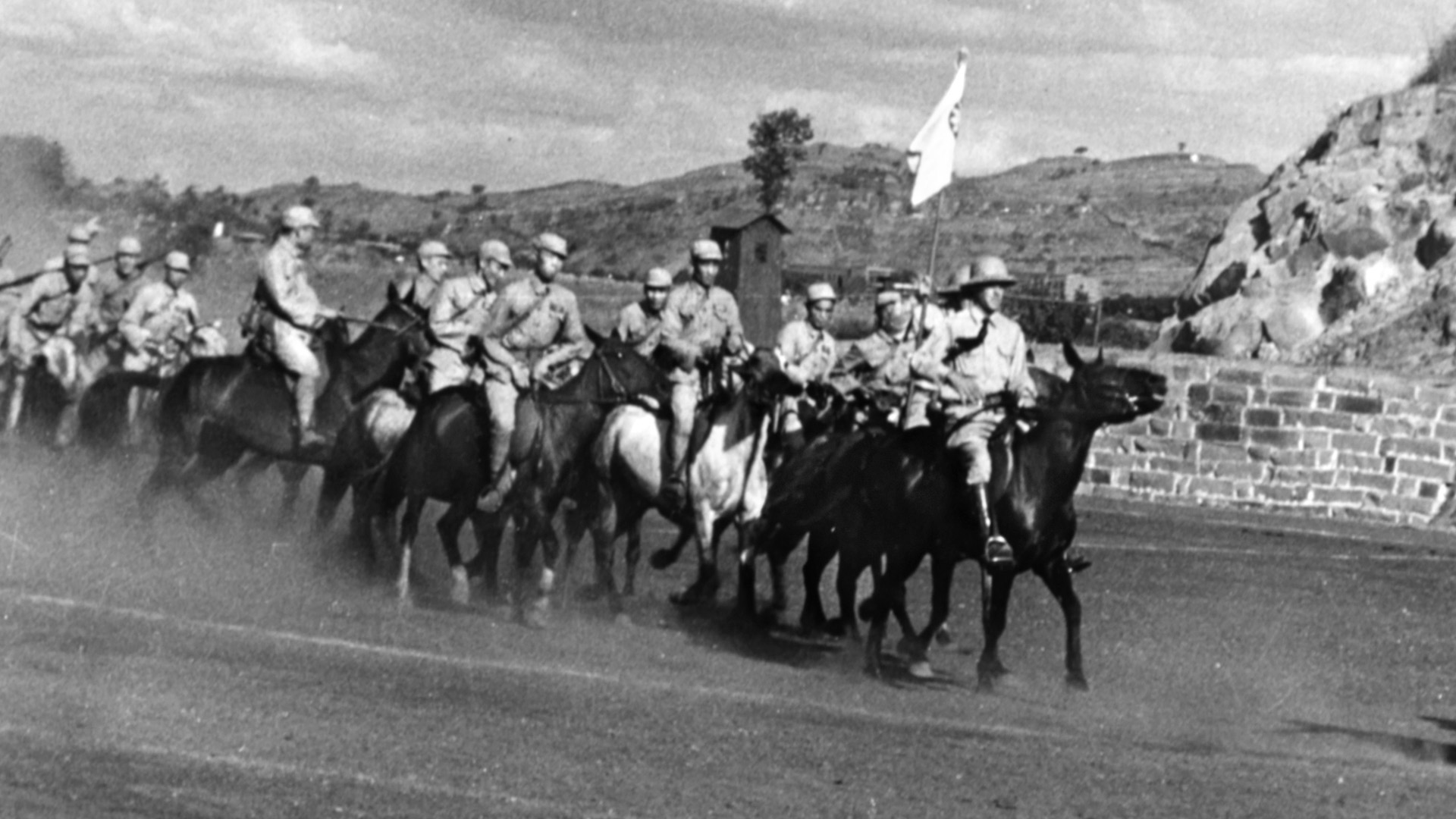
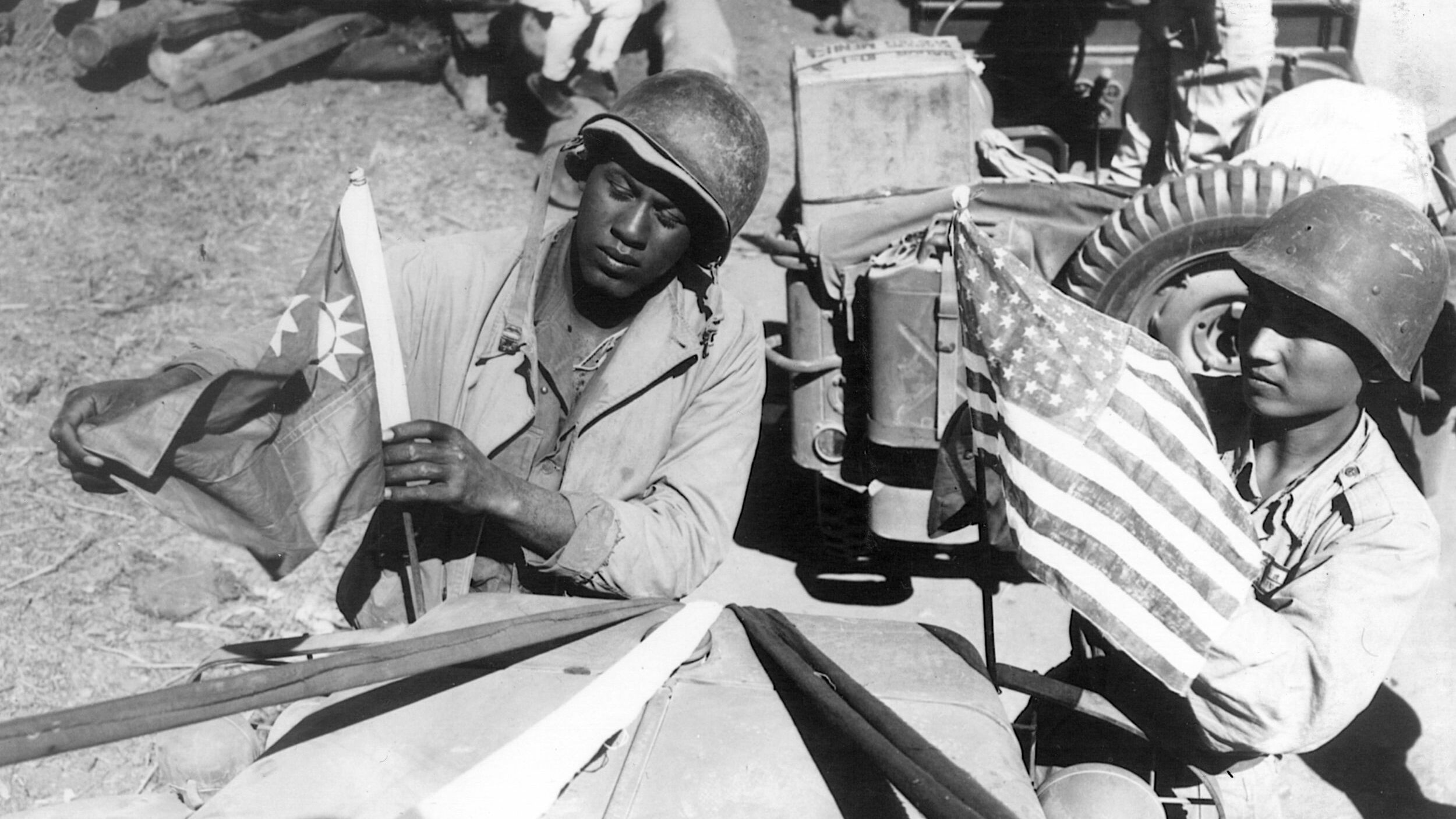
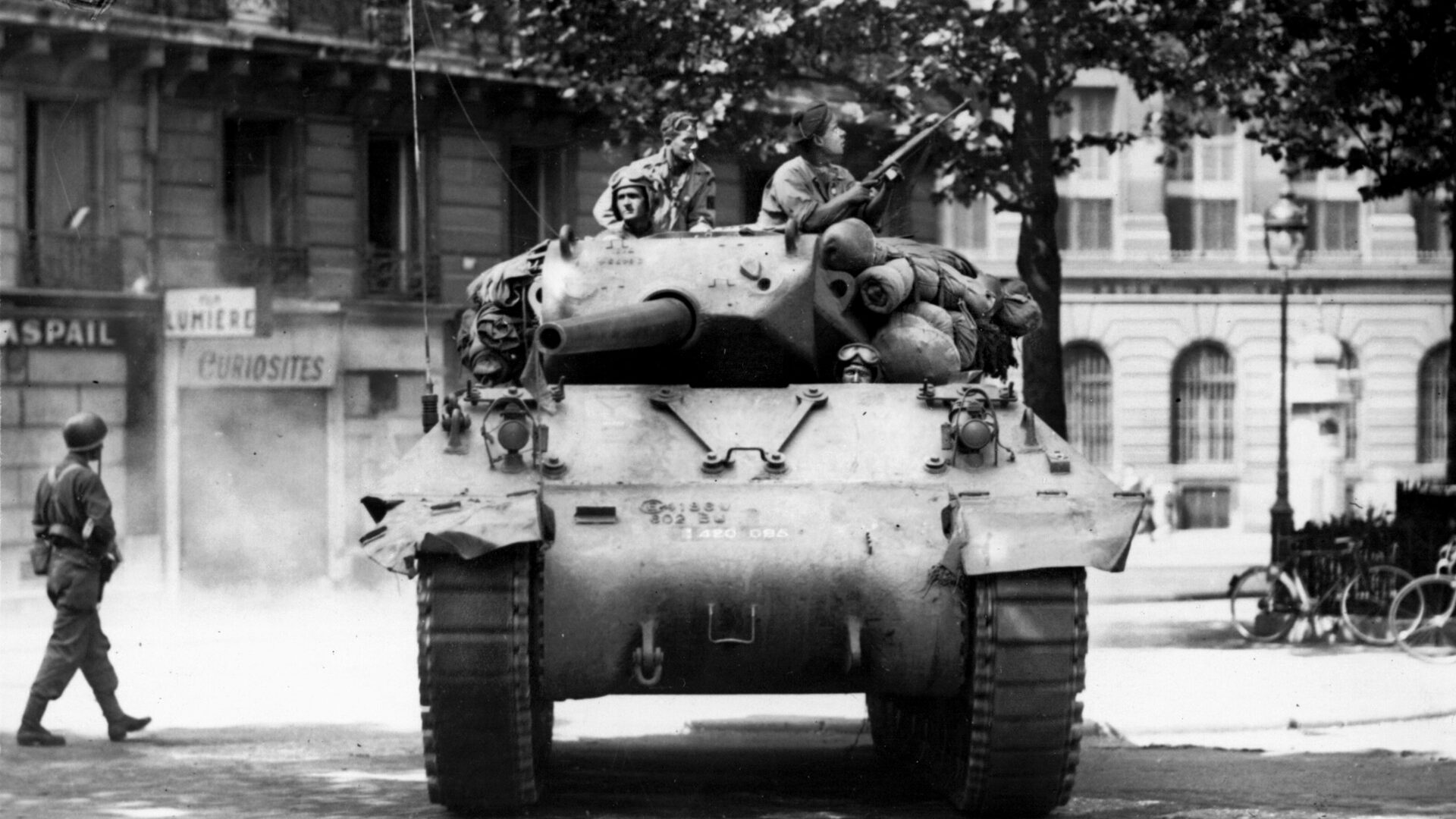
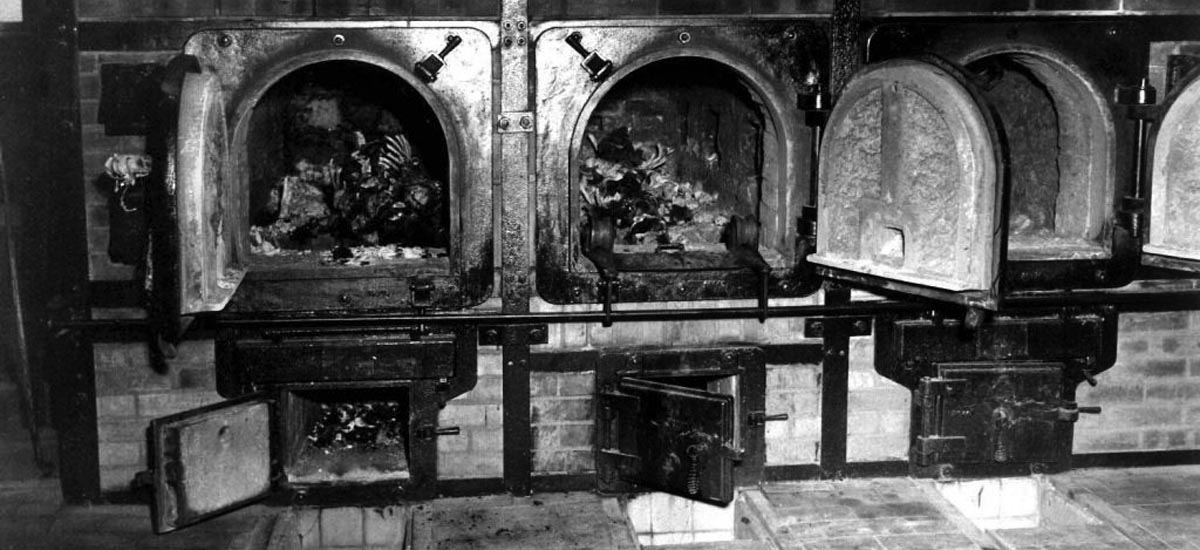
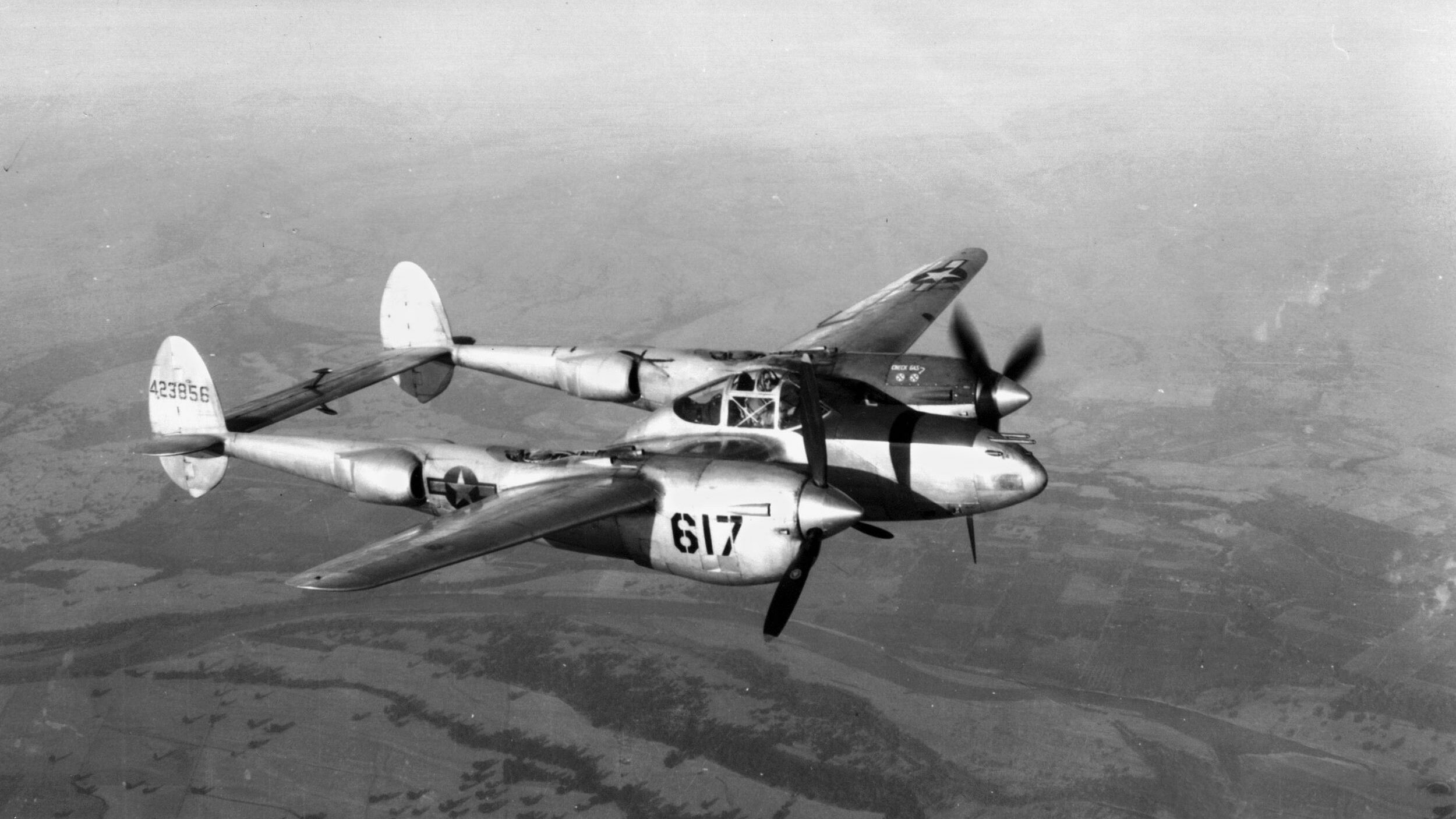
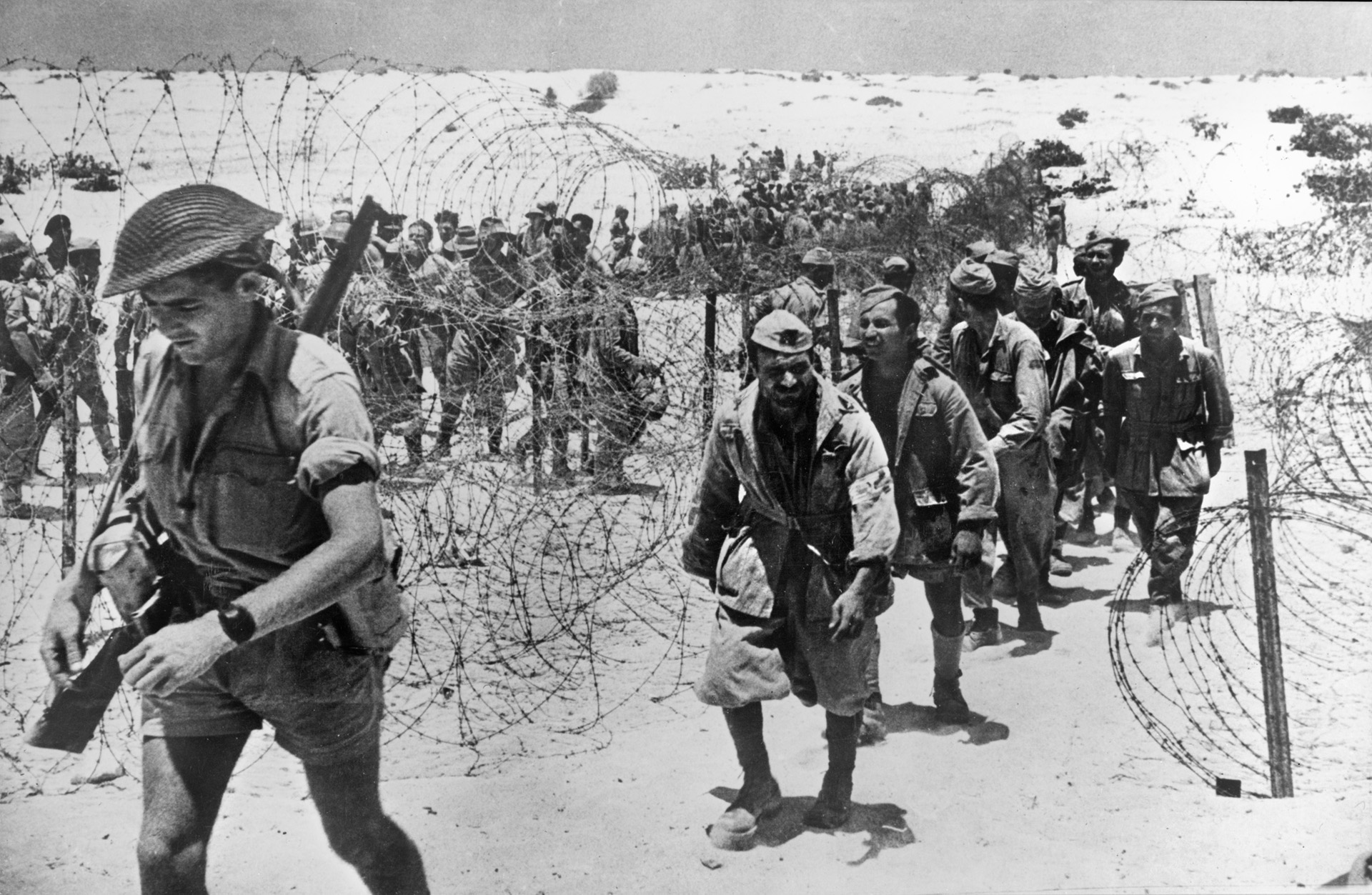
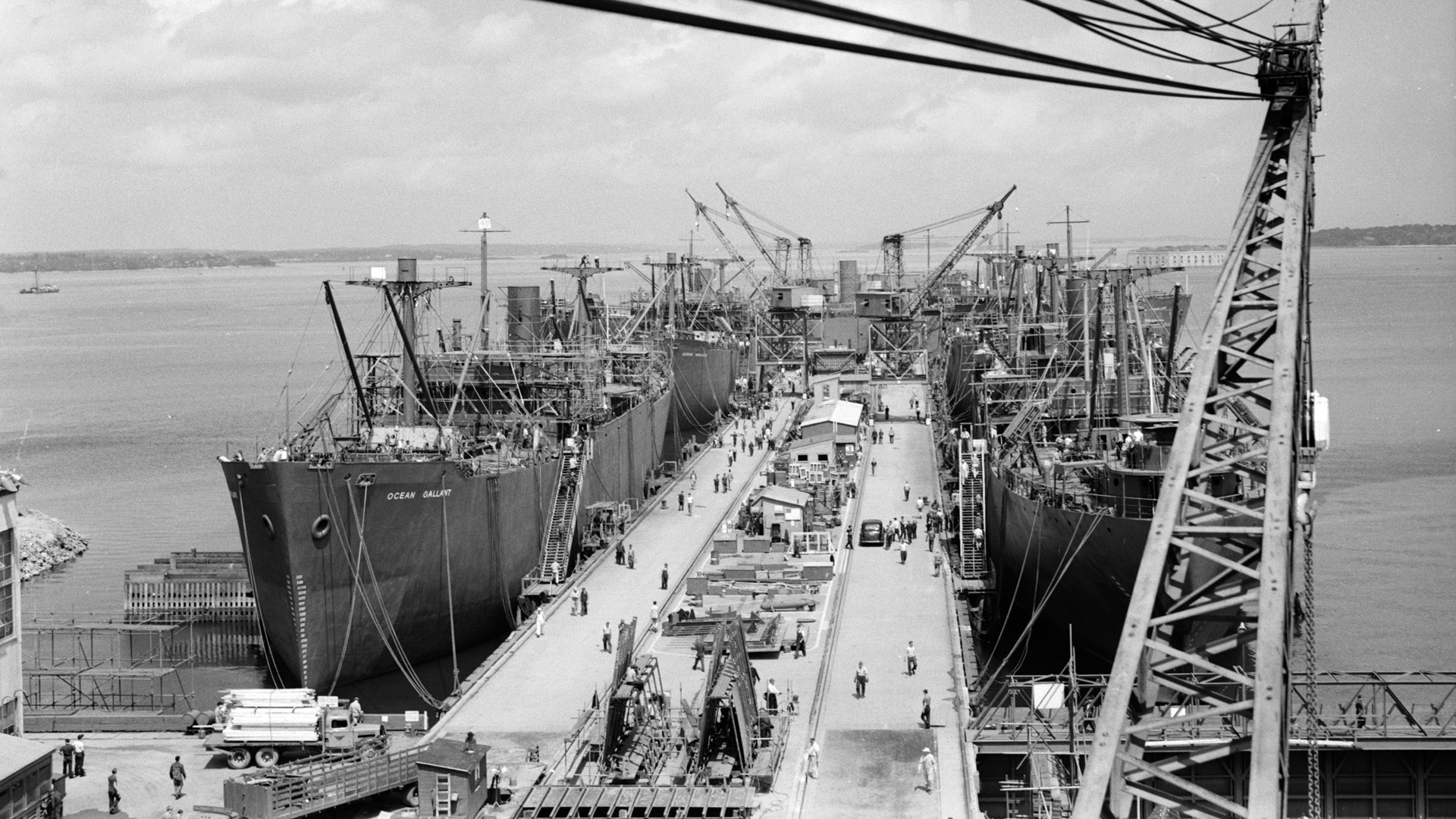

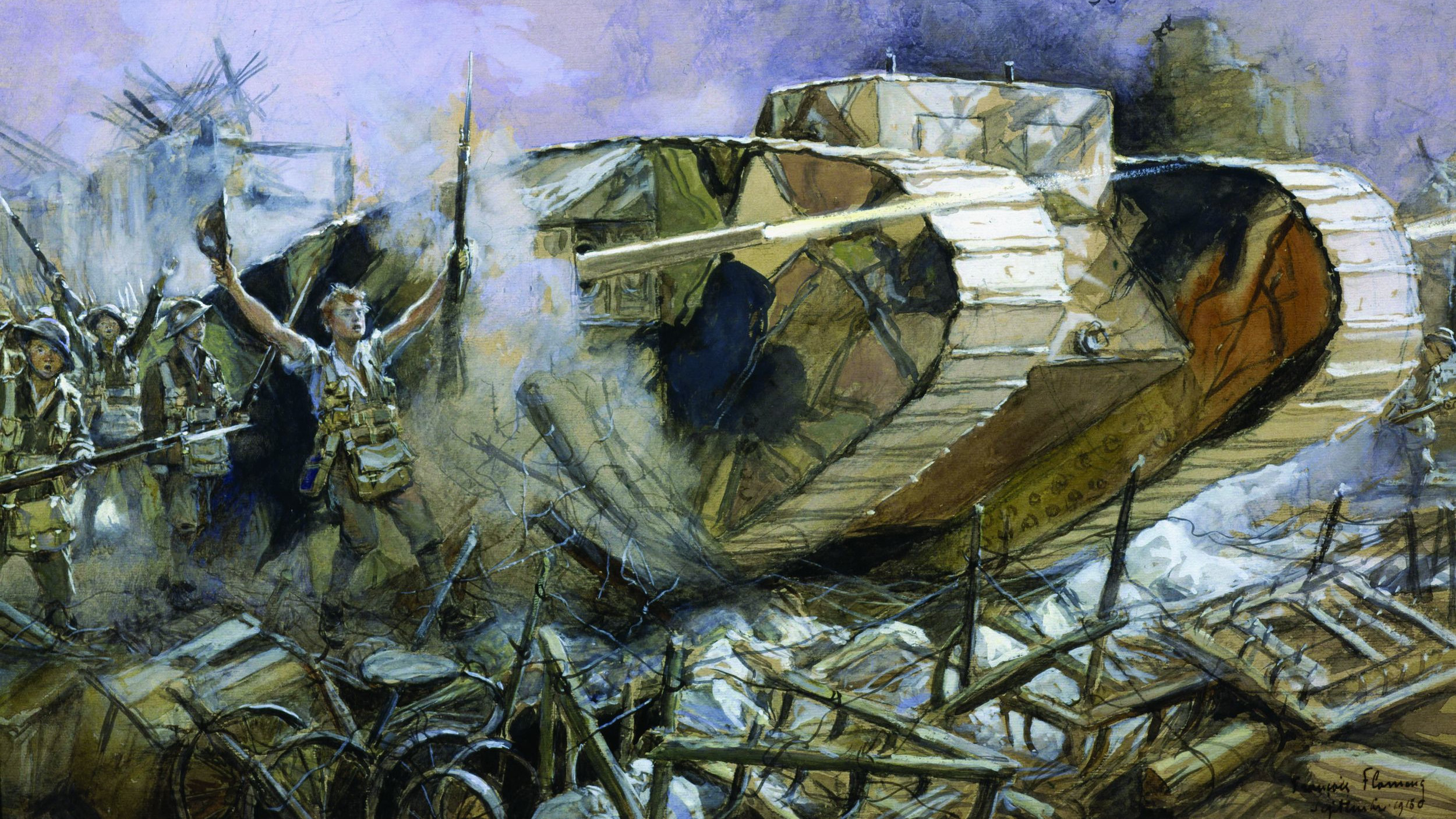
Join The Conversation
Comments
View All Comments